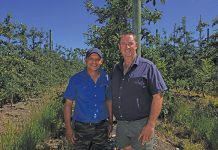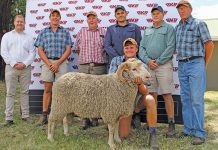Have her approved by the society as an embryo donor, and you can have 10 top calves from second-rate heifers that were destined for slaughter. Dairy cows with outstanding production can be used as embryo donors, then sent for slaughter at the end of their final lactation, or kept on as surrogate mothers for the weaned stud calves. It’s both simple and practical – although expensive, it’s profitable as you get a rapid herd improvement. Surely the same thing can be done with mares? It’s not so simple. For instance, mares can’t be super-ovulated. Unlike cows, they will only produce a single ovum, or if you’re very lucky, two, in each cycle.
If you want more than one foal per year from your donor, it will take several cycles. The cycle timing has to be exact and a vet needs to rectally palpate the donor and recipients to monitor the size of the developing ovarian follicles. Two or three donor mares are required at the time of transfer, as the embryo can be lost if the donor’s cycle isn’t absolutely in sync with the recipient’s. The next major difference is that progestagens are used to get the donor and recipient mares into exactly synchronised cycles. These drugs, unlike the prostaglandins used for cows, have to be injected daily for 10 days.
Progesterone is a steroid hormone, and, like cortisone, can reduce the mare’s resistance to disease. Repeated embryo transfers can also result in hormonal imbalances and reduce fertility. The percentage of live foals born with embryo transfer varies from 20% to 80%, and the age and fertility of both the donor and recipient mares are vital. Taking an old show mare for embryo transfers is not a good bet. Neither is it a good idea to choose elderly mares as recipients. According to the vets who are most successful, the best recipient is a young mare between three and five years old, who has had a foal and proven she takes easily to a stallion.
Maiden mares are the next best choice – while the chances of a chronic endometritis (infection of the uterus) are slight, their fertility and ability to keep the foal to term are unknown. The mare’s temperament has to be good – she’ll have to stand for rectal examinations and not reject or attack the very expensive foal for which she is the surrogate mother. A big, roomy mare will produce a good-sized foal but no genetic characteristics will be passed across – you can use a Boerperd for an Arabian embryo. Another important determinant is the quality of the stallion’s semen. Young stallions are in general more fertile, but it’s usually the semen of old, proven stallions that’s most valuable. Frozen semen would surely be much more convenient – it’s just a matter of defrosting and inseminating. No big deal in cattle, almost anyone can do it! Unfortunately not with horses.
A stallion produces a much greater volume of semen than a bull and five or more doses have to be used per insemination. Mares are also in season for much longer than cows – for up to seven days, where cows take only 12 to 48 hours. The time of insemination is critical. It’s suggested that fresh or chilled semen be used. The stallion has to be brought in for collection as soon as the mare’s ready. Not a problem if it’s your own stallion, but requiring a great deal of polite negotiation if it’s someone else’s. Warmblood breeders were the first to use embryo transfer in SA and have been doing it successfully for about 10 years.
It is a very expensive technique (R11 000 – R15 000 per foal, excluding the service fee of the stallion) but these are very expensive horses. Sporting horses are highly trained jumpers or dressage horses that are unlikely to regain their fitness for international competition if they stop competing for the 18 months it takes to bear and raise a foal. Embryos are exchanged amongst breeders, rather than being sold, to maintain existing bloodlines or outcross to proven performance lines. Embryo transfers have been used in horses in the US for over 20 years.
Most major studs have facilities for semen collection and embryo transfers and some have resident vets to do the work. In SA, however, only a handful of vets have the required expertise and facilities are scarce. Novice breeders dabbling in embryo-transfers may find themselves at the end of a long waiting list! – Dr Mac Contact Dr Mac c/o Chris Nel at [email protected]. |fw








